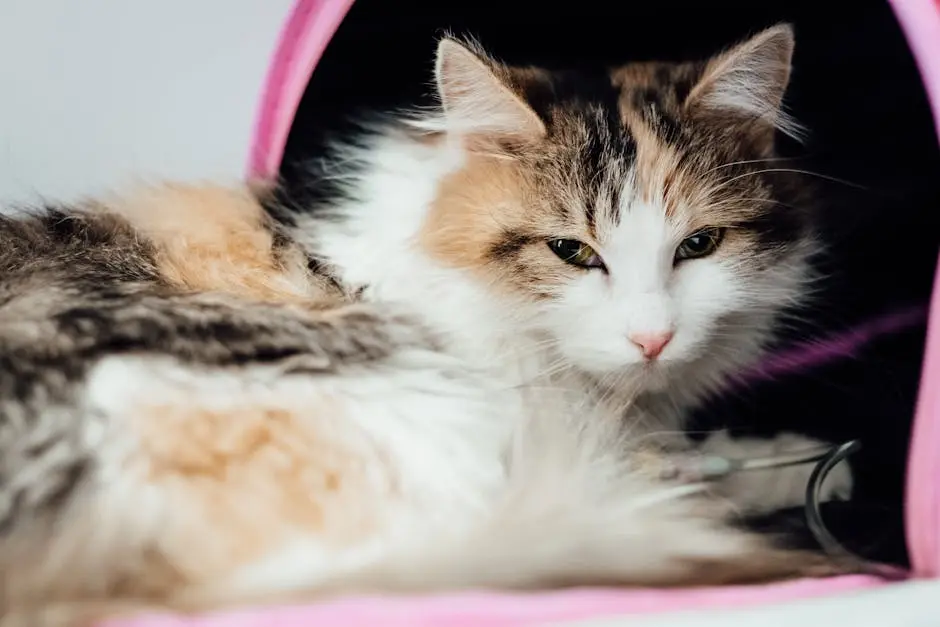As cat owners, we always want what’s best for our furry friends. Sometimes, knowing when to take your cat to the vet can be challenging, especially if they can’t tell us what’s wrong. In this post, we’ll break down the key signs and situations that warrant a visit to the vet, ensuring your cat stays healthy and happy.
Recognizing the signs that your cat needs to see a vet
Cats are masters at hiding their discomfort. However, there are subtle signs you can look for, such as changes in appetite, behavior, or litter box habits. In this section, we’ll discuss these indicators in detail.
One red flag is a noticeable drop in appetite; this could mean anything from dental issues to gastrointestinal problems. Conversely, excessive eating might indicate diabetes or hyperthyroidism. Always note changes in their food consumption, as this can provide vital clues to their health.
Behavioral changes can also be telling. A once playful cat becoming lethargic or withdrawn might be experiencing pain or discomfort. Pay attention to how they interact with you and their environment; any significant shifts deserve a vet’s evaluation.
Moreover, alterations in litter box habits can signal problems. If your cat is straining to urinate or defecate, or if there are sudden accidents outside the litter box, these issues can indicate urinary tract infections or other serious conditions. Early intervention is key.
Common health issues in cats that require veterinary attention
From dental problems to infections, various health issues can affect your cat. Understanding these common issues will help you identify when it’s time to seek professional help. Dental diseases, for instance, are incredibly common in cats and can lead to serious pain and discomfort if not addressed.
Another common concern is obesity, which can lead to diabetes and joint problems. If your cat is overweight, your vet can help create a safe diet and exercise plan. On the flip side, unexplained weight loss is alarming and can point to a range of issues from thyroid problems to cancer.
Fleas and ticks are more than just annoying; they can cause allergies and transmit diseases. Regular preventative treatments can save your cat from these pests, but if you notice excessive scratching or hair loss, it’s essential to consult your veterinarian.
Lastly, gastrointestinal issues such as vomiting or diarrhea can arise from various causes, including dietary indiscretions or more severe illnesses. If your cat experiences persistent vomiting or diarrhea, a vet visit is crucial to rule out any serious conditions and get appropriate treatment.
When should you schedule a routine check-up?
Regular check-ups are essential for your cat’s long-term health. This section will discuss how often you should take your cat to the vet for preventive care and vaccinations. Generally, it’s recommended to schedule a wellness visit at least once a year for adult cats, while kittens should have more frequent visits to stay up-to-date with vaccinations.
During these check-ups, your vet will conduct a thorough examination, assess your cat’s weight, and may even recommend blood tests. These tests can catch health issues before you notice any symptoms at home. The earlier the intervention, the better the outcome.
For senior cats, the frequency of vet visits may increase to every six months. Aging cats face increased risks for various conditions, including kidney disease and arthritis. Regular examinations can help monitor their health and allow for timely adjustments in their care.
Emergency situations: when to act fast
In some instances, immediate veterinary attention is critical. Here, we’ll outline emergency situations, such as injuries or sudden illness, that require quick action. If your cat falls from a significant height or is involved in a vehicle accident, you should seek emergency care right away, even if they seem fine.
Additionally, if your cat shows signs of severe distress, such as difficulty breathing, excessive bleeding, or seizures, don’t wait. These symptoms indicate that your cat is in immediate danger and requires urgent care.
Another situation to consider is if your cat has ingested a poisonous substance. If you suspect your cat has eaten something toxic—like certain plants, human foods, or household chemicals—call your vet or an emergency animal poison control line immediately.
How to prepare for your vet visit
Preparing for a vet visit can help ease your cat’s stress and ensure a smooth appointment. We’ll share tips on what to bring and how to make the experience more comfortable for your feline friend. Start by bringing any medical records, especially if it’s your first visit. This helps your vet understand your cat’s health history.
Make sure to bring a secure, comfortable carrier. Cats often feel anxious in new environments, so having a familiar space can help them feel safe. Consider covering the carrier with a light blanket to further reduce stress during travel.
In addition, jot down any questions or concerns you have about your cat’s behavior or health. This will help you remember to address everything during the visit, ensuring both you and your vet are on the same page.
Final Thoughts on Cat Health
Knowing when to take your cat to the vet is crucial for their overall well-being. By keeping an eye on your cat’s behavior and health, you can catch potential issues early. Remember, regular check-ups and timely visits can make all the difference in your cat’s health.


